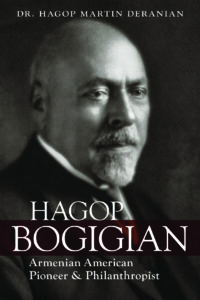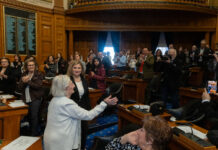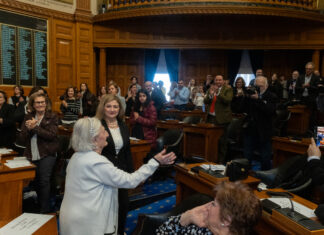 By Aram Arkun
By Aram Arkun
Mirror-Spectator Staff
WORCESTER — Hagop Bogigian (1856-1931) was one of the early emigrants from Ottoman Armenia to the United States. Though penniless upon arrival in 1876, he succeeded beyond his own expectations in the oriental rug business in Boston, and became a millionaire. As a philanthropist, he supported Armenian and non-Armenian causes.
Dr. Hagop Martin Deranian, Bogigian’s great-nephew, has written a short biography of his relative entitled Hagop Bogigian: Armenian American Pioneer and Philanthropist, published by the Armenian Cultural Foundation of Arlington, Massachusetts this year. This 115-page volume is richly illustrated. The author has used personal family papers and reminiscences, Bogigian’s own published 1925 autobiography (In Quest of the Soul of Civilization), and articles in various newspapers and periodicals to present the arc of Bogigian’s life, stretching from the town of Hussenig in the Ottoman Empire to Boston.
During his long life, Bogigian interacted with many notable individuals. The first customer of his rug store was the poet Henry Wadsworth Longfellow, and through him he came to know many New England intellectuals. Longfellow sent Harvard professor Charles Elliot Norton to see Bogigian, and later introduced John Greenleaf Whittier, Ralph Waldo Emerson, Louisa May Alcott and Oliver Wendell Holmes to Bogigian.
Bogigian came to know the Marquess of Salisbury in London, who served as prime minister of Great Britain thrice, and William E. Gladstone, a four-time prime minister, as well as Armenophile James Bryce, in connection to a project to get British teachers to help the Catholicate of Cilicia prepare clergymen. Unfortunately the project fell through due to political problems.









